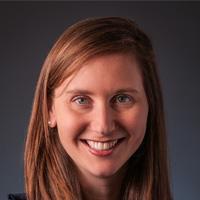
Developing a Math Identity
“Your brother was one of my best students,” is something I heard a lot in my high school math classes.
Beginning in elementary school, I wanted to be a math teacher and thought of myself as GREAT at math. I felt good at math, and my grades proved it. But my perception of myself as a successful math student began to change in the latter years of high school—and though I passed the AP Calculus exam, I did not take a single math course in college.
I am sure that many students can tell similar stories about opting out of mathematics courses because of the messages they receive—explicitly or implicitly—about whether they “should” be good at math, based on factors such as their gender, race/ethnicity, income level, or parents’ level of education.
Reflecting on what I know now, I think I would have been an excellent math teacher and potentially a mathematics role model for all the girls in my classes. Instead, I pursued political science, taught social studies, and was only finally reunited with my love for math at the City University of New York’s Hunter College, when I had to take statistics as preparation for my graduate program in policy.
I tell this story not only to emphasize how important a “sense of belonging” can be to student success in math, but also to highlight the need for high school students to understand that some kind of math will almost certainly be necessary for what they want to accomplish in life.
In truth, college-level mathematical knowledge is becoming increasingly necessary (paywall) for all students to earn a wage that enables them to live with basic comforts—and good options for how to spend their time and income.
The question is which kinds of mathematical knowledge does each student need? A core principle in the math pathways movement is (to paraphrase) that each student’s math pathway should align with what they want to be, learn, and do when they grow up.
After 6 years of mathematics pathways work, it is clear that entering college students looking at broad career fields (such as computer science), meta-majors, or programs of study should be enrolled in a mathematics pathway aligned with their academic and professional aspirations.
For example, professional organization recommendations and institutional requirements indicate that the most relevant mathematics for students entering health and social sciences is statistics. Similarly, students choosing a liberal arts and humanities path should start with quantitative reasoning. The historically traditional path of college algebra to and through calculus is still necessary for students pursuing STEM careers, such as engineering.
Mathematics pathways work is well underway in higher education systems in dozens of states and counting, and the field is now considering what these changes mean for high school math.
Most math pathways begin in content typically taught in the fourth-year high school courses. High schools have the opportunity to expand mathematics preparation beyond the well-trodden, narrow path of the Algebra I–to–Calculus sequence to include the diverse domains of math that students may need for their postsecondary degrees.
All students need a foundation of essential algebraic, function, geometric, probabilistic, and statistical concepts, which are usually found in high school Algebra I, Geometry, and parts of Algebra II courses. The fourth year of high school math should offer a range of advanced high school and entry-level college mathematics courses that prepare students for the variety of mathematics pathways and career programs they will encounter in college.
The question for students is not “Am I a math person?” or, “Do I belong in a math class?” but “What math do I need to learn to achieve my personal and professional goals? Which college-level math course should I take?” Framing the conversation this way gives the power back to students.
Everyone is a math person. The only question is, what kind of math person are you?
For more information about math pathways in high school, check out our series of Launch Years briefs on this topic.
About the Author
Lindsay Fitzpatrick
In my seven years of teaching social studies in the Bronx and East Austin, I learned about the intense complexities of setting up an environment where students can be their best selves and focus on learning. Too often, our most vulnerable students and families are underserved by education situations that do not meet their needs and do not allow them to become the successful adults they want to be.
Get in Touch
How can the Dana Center work with you to ensure that our nation's students are ready for postsecondary education and the contemporary workforce?

